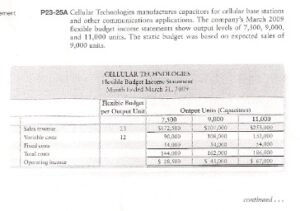
Double-entry accounting has been in use for hundreds, if not thousands, of years; it was first documented in a book by Luca Pacioli in Italy in 1494. The inventor of double-entry bookkeeping is not known with certainty, and is frequently attributed to either Amatino Manucci, a Florentine merchant, or Luca Pacioli, a Venetian friar. This guide will tell you more about double-entry accounting, how it works, and whether a career in accounting is right for you.
- Regardless of which accounts and how many are involved by a given transaction, the fundamental accounting equation of assets equal liabilities plus equity will hold.
- The total amount credited has to equal the total amount debited, and vice versa.
- After a series of transactions, therefore, the sum of all the accounts with a debit balance will equal the sum of all the accounts with a credit balance.
- Mistakes can occur in identifying the accounts affected, determining whether to debit or credit an account and calculating the amounts, among other possibilities.
- The first transaction that Joe will record for his company is his personal investment of $20,000 in exchange for 5,000 shares of Direct Delivery’s common stock.
- The trial balance labels all of the accounts that have a normal debit balance and those with a normal credit balance.
What Is a Trial Balance?
The chart of accounts is a different category group for the financial transactions in your business and is used to generate financial statements. The concept of double entry accounting https://www.business-accounting.net/ is the basis for recording business transaction and journal entries. Make sure you have a good understanding of this concept before moving on past the accounting basics section.
thought on “Double Entry System-Definition, Example, Principles, Advantages and Disadvantages [With PDF]”

For marketing, this means engaging your prospects with the right message, at the right time, through targeted digital marketing campaigns and journeys. Sales reps can work faster and smarter with a clear view of their pipeline and accomplish more accurate forecasting. Unlike the early days, today’s CRM software lives in the cloud, giving you the ability to safely save and access https://www.personal-accounting.org/your-pathway-to-becoming-an-enrolled-agent/ all of your customer data from anywhere at any time. That means every employee has the same information in real-time, and can make updates wherever they are. CRM helps you find new customers, win their business, and keep them happy and can use automation to help you collect even more information faster, like news about your accounts so that everyone stays up to date.

Brief History of Double-Entry Bookkeeping
Because the full details of each account cannot be recorded unless a separate book is kept. In the case of a double-entry system, the error is more likely to be due to systemic complexity and a lack of skilled personnel, as it is necessary to keep the books according to each accounting sector. This method takes into account all expenses incurred by the organization, so if actual expenses in any sector exceed estimates, the extra costs can be managed through comparative analysis. One of the characteristics of a double-entry system is that each transaction must involve two parties.
In double-entry accounting, what’s the difference between debits and credits?
For example, consider receiving a check for $5,000 as a vehicle insurance provider. To account for this transaction, $5,000 is entered into the insurance account as a debit. This account will eventually be a charge in the profit and loss account.
Ask Any Financial Question

Some of the biggest gains can come from combining CRM with the power of AI. Doing so enables you to quickly pull together everything you know about a customer, which can be used to personalize every interaction. Having this level of knowledge makes every employee even smarter and more productive. It equips them with insights to make more accurate predictions around forecasts like quarterly sales targets, ecommerce sales, or the best time to send a marketing email. For example, marketers can use CRM tools to manage campaigns and lead customer journeys with a data-driven approach.
The accountant would then increase the asset column by $1,000 and subtract $1,000 from accounts receivable. The equation remains in balance, as the equivalent increase and decrease affect one side—the asset side—of the accounting equation. Equipment is a noncurrent or long-term asset account which reports the cost of the equipment. Equipment will be depreciated over its useful life by debiting the income statement account Depreciation Expense and crediting the balance sheet account Accumulated Depreciation (a contra asset account). Meanwhile, your cash decreases (you credit the cash account) by $500.
Recording transactions this way provides you with a detailed, comprehensive view of your financials—one that you couldn’t get using simpler systems like single-entry. In this article, we’ll explain double-entry accounting as simply as we can, how it differs from single-entry, and why any of this matters for your business. He joined NerdWallet in 2019 as a student loans writer, serving as an authority on that topic after spending more than a decade at student loan guarantor American Student Assistance. In that role, Ryan co-authored the Student Loan Ranger blog in partnership with U.S. News & World Report, as well as wrote and edited content about education financing and financial literacy for multiple online properties, e-courses and more. Ryan also previously oversaw the production of life science journals as a managing editor for publisher Cell Press.
As a small business owner, knowing which accounting practices you should use can be confusing. However, you must remember the fundamental accounting principles for your business’s finances. There are several different types of accounts that are used widely in accounting – the most common ones being asset, liability, capital, expense, and income accounts. If you’re not sure whether your accounting system is double-entry, a good rule of thumb is to look for a balance sheet. If you can produce a balance sheet from your accounting software without having to input anything other than the date for the report, you are using a double-entry accounting system.
The double-entry system also requires that for all transactions, the amounts entered as debits must be equal to the amounts entered as credits. For instance, if a business takes a loan from a financial entity like a bank, the borrowed money will raise the company’s assets and the loan liability will also rise by an equivalent amount. If a business buys raw materials by paying cash, it will lead to an increase in the inventory (asset) while reducing cash capital (another asset). Because there are two or more accounts affected by every transaction carried out by a company, the accounting system is referred to as double-entry accounting.
Commerce teams can quickly launch and scale ecommerce — from online orders to curbside pickup — for their consumer shoppers (B2C commerce) and business buyers (B2B commerce). And customer service agents can respond to customer needs on any channel — from the office, at home, or in the field. Customer relationship management software can benefit virtually any department at your company, from sales to service, to IT, to marketing, and more. Whether you want to start big or start small, it’s easier to get started than you might think. Various errors will occur if the account is maintained by an inexperienced person. So, if you keep the account in this manner, you can easily obtain accurate information.
This is because it is the only reliable system for recording business transactions. The system of bookkeeping under which both changes in a transaction are recorded together at an equal amount (one known as “credit” depository definition and the other as “debit”) is known as the double-entry system. Double-entry bookkeeping was developed in the mercantile period of Europe to help rationalize commercial transactions and make trade more efficient.
The sum of all debits made in each day’s transactions must equal the sum of all credits in those transactions. After a series of transactions, therefore, the sum of all the accounts with a debit balance will equal the sum of all the accounts with a credit balance. In single-entry accounting, when a business completes a transaction, it records that transaction in only one account. For example, if a business sells a good, the expenses of the good are recorded when it is purchased the good, and the revenue is recorded when the good is sold. With double-entry accounting, when the good is purchased, it records an increase in inventory and a decrease in assets.